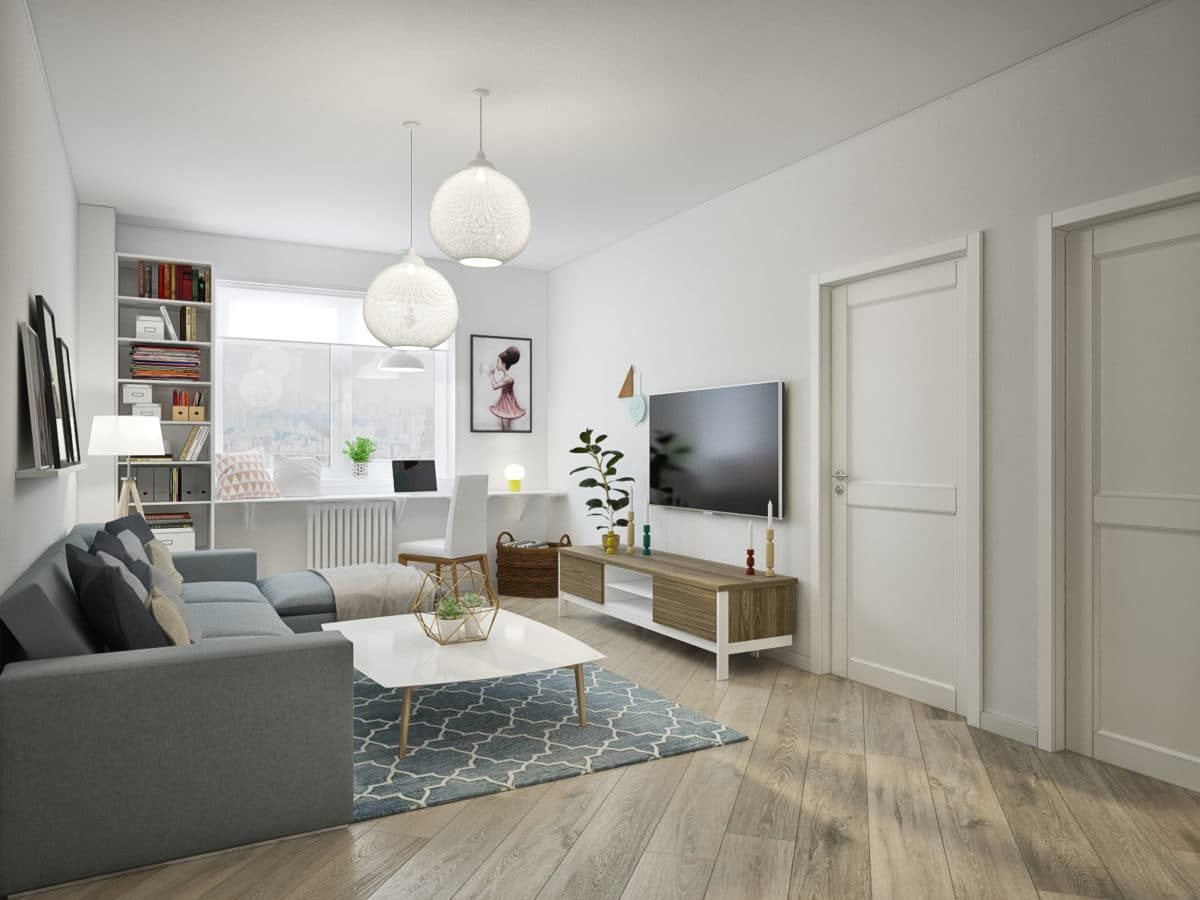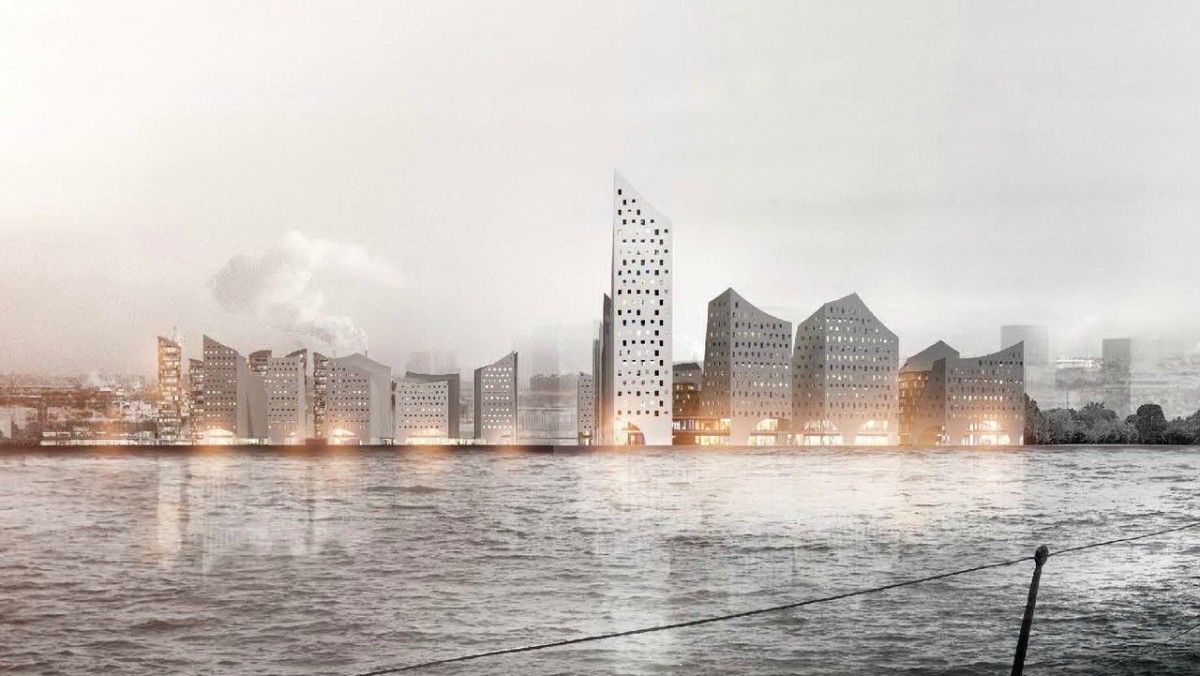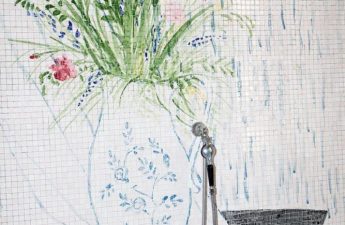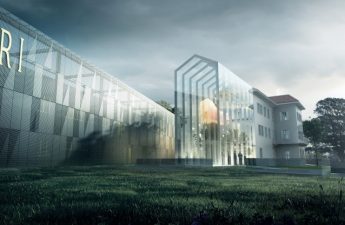Ever wondered what they would behome in ten years? And in twenty? Today you will find out what the famous Italian architect Chino Dzucchi of the House of the Future thinks about this - the topic is relevant and extremely interesting. After all, each of us is curious about how our habitat will look like in a few decades. What will the materials be? How much will the usual forms change? Or maybe the need for houses will disappear altogether, and everyone will live under a huge glass dome, as the good old Stephen King bequeathed? At the annual exhibition of furniture and design i Saloni WorldWide, our editor-in-chief Oksana Kashenko managed to talk about the future with the popular Italian architect Chino Dzucchi, and now you will find out his opinion. Chino Dzukki, architect Chino Dzukki was born in Milan in 1955. Graduated from the Massachusetts Institute of Technology in 1978 and the Polytechnic Institute of Milan in 1979. He is the author of projects such as the commercial exhibition complex in Abbyategrasso, residential buildings in Abbyategrasso, Venice, Ancona, office buildings in Casorezzo, Lucca and Montevideo. Chino also teaches, writes articles for many specialized Italian magazines, and runs his own architectural bureau Cino Zucchi Architetti.  - How do you see the house of the future?- I'll tell you a real story. One architect built the house of the future. He got a kind of flying saucer. It seemed to him that it was very interesting. He built thirty such houses, but no one lives in them today. And all because a person does not exist in the future, but in the present. And I think that there is no point in talking about a common future for all. The future is individual, everyone sees it differently. I am a member of a research group that was established in Austria. The group was entrusted with the task of determining what the house might look like in 20-30 years. During the last meeting, I noticed that the modern person divides the house into a bedroom, a living room, a bathroom ... However, many things in our life are changing. Right now, for example, I have four children, and almost all of them spend most of their time with the computer and watching videos on YouTube. Family traditional life has changed. If earlier everyone regularly gathered at the same table, now in the evenings everyone goes about their business. A few days ago, my wife asked me what I was doing while sitting at the computer. I replied that I was chatting with my daughter. “But she's behind the wall! - the wife flared up. " "Yes, but I'm sending her music files," I replied. And that's okay. In my memory there were already both electronic and mechanical houses ... There is a film by Jacques Tati "My Uncle", 1958. In it, the director is extremely successful in ironicizing the theme of all sorts of "gadgets" in the house. And today's technology seems to dissolve in a person and the world around him. We cannot live without her. And we already treat electronics differently. If you observe, you will notice: the first thing people do upon arrival in another country is send SMS or call. I still am amazed at modern technology. So maybe the house of the future can be described as Palladio's villa with an iPod.
- How do you see the house of the future?- I'll tell you a real story. One architect built the house of the future. He got a kind of flying saucer. It seemed to him that it was very interesting. He built thirty such houses, but no one lives in them today. And all because a person does not exist in the future, but in the present. And I think that there is no point in talking about a common future for all. The future is individual, everyone sees it differently. I am a member of a research group that was established in Austria. The group was entrusted with the task of determining what the house might look like in 20-30 years. During the last meeting, I noticed that the modern person divides the house into a bedroom, a living room, a bathroom ... However, many things in our life are changing. Right now, for example, I have four children, and almost all of them spend most of their time with the computer and watching videos on YouTube. Family traditional life has changed. If earlier everyone regularly gathered at the same table, now in the evenings everyone goes about their business. A few days ago, my wife asked me what I was doing while sitting at the computer. I replied that I was chatting with my daughter. “But she's behind the wall! - the wife flared up. " "Yes, but I'm sending her music files," I replied. And that's okay. In my memory there were already both electronic and mechanical houses ... There is a film by Jacques Tati "My Uncle", 1958. In it, the director is extremely successful in ironicizing the theme of all sorts of "gadgets" in the house. And today's technology seems to dissolve in a person and the world around him. We cannot live without her. And we already treat electronics differently. If you observe, you will notice: the first thing people do upon arrival in another country is send SMS or call. I still am amazed at modern technology. So maybe the house of the future can be described as Palladio's villa with an iPod.  - And what materials will be used in the housefuture? - Someone has already said that we live in the era of plastic and synthetics. Modern technologies make it possible to create materials with unprecedented characteristics. For example, if you take the production of ceramic tiles, now many companies offer tiles that look like natural stone. However, they do not just create a patterned structure, they manage to create randomly located veins. There was a time when peasants, townspeople, artisans took materials in the forest, at the quarry ... And the harmony that we now observe in rural settlements is largely due to the fact that the range of materials is limited. The modern person has a wider choice, but the likelihood of making a mistake is much higher. Therefore, modern cities often cause us a feeling of some kind of embarrassment. I believe that it is unlikely that we will be able to come to a single model for the use of building materials. There is such an architect - Joseph Frank, he is a Jew, and during the war he immigrated to Sweden. So, he said: the modern era is the totality of all past eras. In his vision, the modern city is the Tower of Babel. Futurists and utopians envisioned a solar future for a unified architectural model. In fact, the cities are very different. Metropolitan areas have Chinese and Indian quarters. Therefore, in the future there will be a certain set of models proposed by architects. If you take today's 17-year-old Japanese, he will look more like an American than his grandparents. My exhibition is currently taking place in Italy - "Customs". And in the introductory part, I tried to highlight the contradictions between traditional ethnography and architecture. It turned out that there is an inextricable connection between material, culture and place of residence of people. If today a type of ethnography that is not tied to geography is possible, I mean subcultures (cyber-punks, goths). In England, for example, groups such as the "feigned aristocracy" (they wear the costumes of lords) are now very popular. Or there are those who consider themselves macho. However, all this does not apply to a single country, it can be observed everywhere.
- And what materials will be used in the housefuture? - Someone has already said that we live in the era of plastic and synthetics. Modern technologies make it possible to create materials with unprecedented characteristics. For example, if you take the production of ceramic tiles, now many companies offer tiles that look like natural stone. However, they do not just create a patterned structure, they manage to create randomly located veins. There was a time when peasants, townspeople, artisans took materials in the forest, at the quarry ... And the harmony that we now observe in rural settlements is largely due to the fact that the range of materials is limited. The modern person has a wider choice, but the likelihood of making a mistake is much higher. Therefore, modern cities often cause us a feeling of some kind of embarrassment. I believe that it is unlikely that we will be able to come to a single model for the use of building materials. There is such an architect - Joseph Frank, he is a Jew, and during the war he immigrated to Sweden. So, he said: the modern era is the totality of all past eras. In his vision, the modern city is the Tower of Babel. Futurists and utopians envisioned a solar future for a unified architectural model. In fact, the cities are very different. Metropolitan areas have Chinese and Indian quarters. Therefore, in the future there will be a certain set of models proposed by architects. If you take today's 17-year-old Japanese, he will look more like an American than his grandparents. My exhibition is currently taking place in Italy - "Customs". And in the introductory part, I tried to highlight the contradictions between traditional ethnography and architecture. It turned out that there is an inextricable connection between material, culture and place of residence of people. If today a type of ethnography that is not tied to geography is possible, I mean subcultures (cyber-punks, goths). In England, for example, groups such as the "feigned aristocracy" (they wear the costumes of lords) are now very popular. Or there are those who consider themselves macho. However, all this does not apply to a single country, it can be observed everywhere.  - Plywood is very popular in Russia as a decorationmaterial. How can you comment on this? - Right now, a completely wooden high-rise building is being built in Vienna. Because modern technology makes it possible to build high-rise buildings from such material. But its facade will not be made of natural materials due to maintenance problems. Wood is a material well known to man; we all build from it, if not a house, then at least a summer cottage. Multilayer wood (plywood) is stable, it retains its shape. On the one hand, we all love solid wood, but there are situations where it simply cannot be used, and that is when we use plywood. As for the finishing of facades and the outside of buildings, for example, a Spanish company produces panels for cladding buildings made of wood. In reality, it is plywood, which is processed for strength, and it looks like plastic more than wood. Building entire cities out of wood, of course, is now impractical. Because after a while, either major repairs will be required, or the building will have to be demolished and a new one built. Wood has very interesting characteristics, which is why architects are now experimenting a lot with it. Tastes change, something new is constantly appearing, but sometimes you want borscht. So it is with materials - sometimes you want to return to what has already happened. Chino Dzukki, architect
- Plywood is very popular in Russia as a decorationmaterial. How can you comment on this? - Right now, a completely wooden high-rise building is being built in Vienna. Because modern technology makes it possible to build high-rise buildings from such material. But its facade will not be made of natural materials due to maintenance problems. Wood is a material well known to man; we all build from it, if not a house, then at least a summer cottage. Multilayer wood (plywood) is stable, it retains its shape. On the one hand, we all love solid wood, but there are situations where it simply cannot be used, and that is when we use plywood. As for the finishing of facades and the outside of buildings, for example, a Spanish company produces panels for cladding buildings made of wood. In reality, it is plywood, which is processed for strength, and it looks like plastic more than wood. Building entire cities out of wood, of course, is now impractical. Because after a while, either major repairs will be required, or the building will have to be demolished and a new one built. Wood has very interesting characteristics, which is why architects are now experimenting a lot with it. Tastes change, something new is constantly appearing, but sometimes you want borscht. So it is with materials - sometimes you want to return to what has already happened. Chino Dzukki, architect 
 By the way, the Milan edition of the exhibition i Saloni (Salone del Mobile) this year will be held very soon - from 12 to 17 April.
By the way, the Milan edition of the exhibition i Saloni (Salone del Mobile) this year will be held very soon - from 12 to 17 April.
What will be the houses of the future: says architect Chino Dzukki - etk-fashion.com



